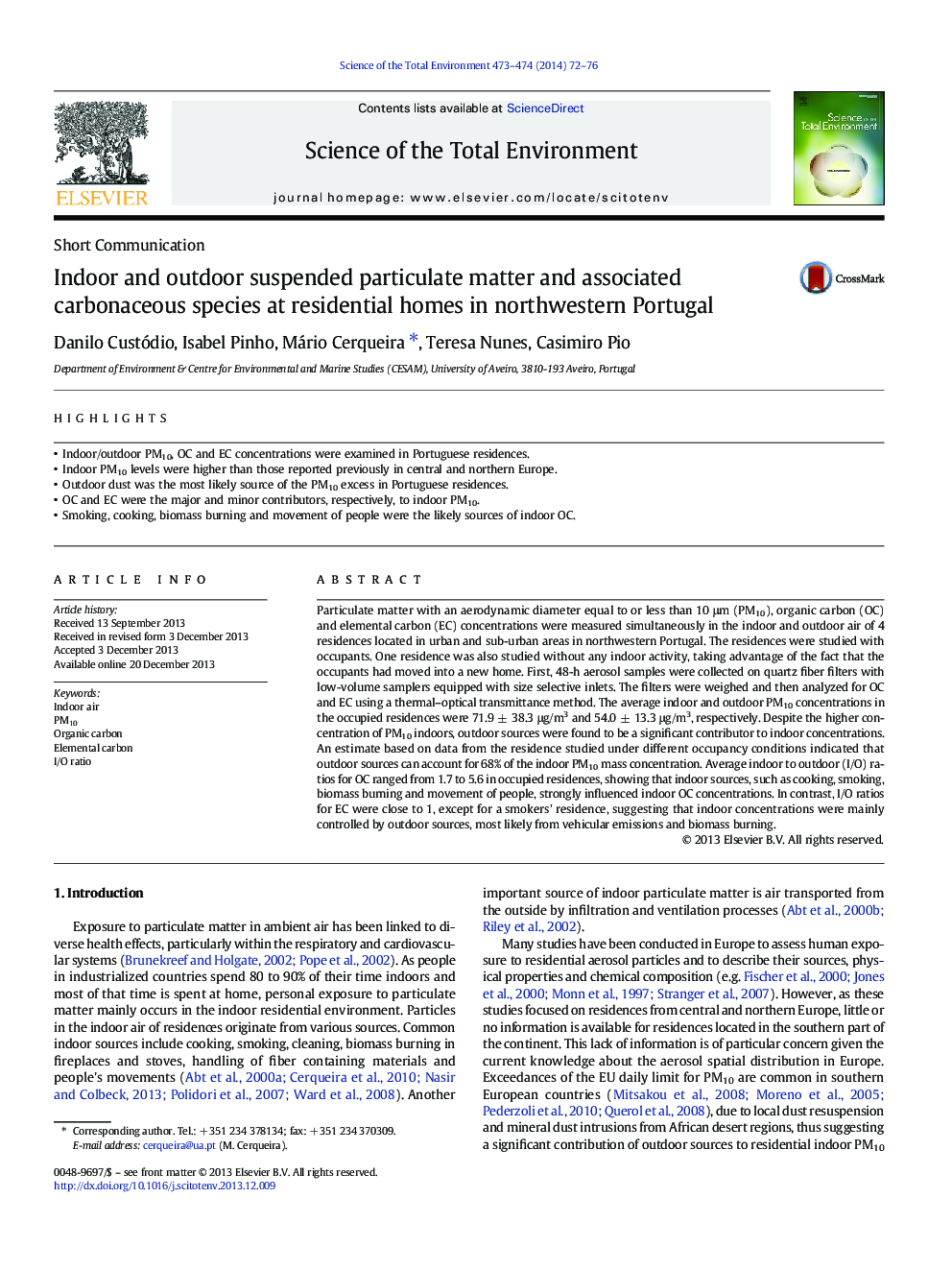| کد مقاله | کد نشریه | سال انتشار | مقاله انگلیسی | نسخه تمام متن |
|---|---|---|---|---|
| 6331603 | 1619791 | 2014 | 5 صفحه PDF | دانلود رایگان |
- Indoor/outdoor PM10, OC and EC concentrations were examined in Portuguese residences.
- Indoor PM10 levels were higher than those reported previously in central and northern Europe.
- Outdoor dust was the most likely source of the PM10 excess in Portuguese residences.
- OC and EC were the major and minor contributors, respectively, to indoor PM10.
- Smoking, cooking, biomass burning and movement of people were the likely sources of indoor OC.
Particulate matter with an aerodynamic diameter equal to or less than 10 μm (PM10), organic carbon (OC) and elemental carbon (EC) concentrations were measured simultaneously in the indoor and outdoor air of 4 residences located in urban and sub-urban areas in northwestern Portugal. The residences were studied with occupants. One residence was also studied without any indoor activity, taking advantage of the fact that the occupants had moved into a new home. First, 48-h aerosol samples were collected on quartz fiber filters with low-volume samplers equipped with size selective inlets. The filters were weighed and then analyzed for OC and EC using a thermal-optical transmittance method. The average indoor and outdoor PM10 concentrations in the occupied residences were 71.9 ± 38.3 μg/m3 and 54.0 ± 13.3 μg/m3, respectively. Despite the higher concentration of PM10 indoors, outdoor sources were found to be a significant contributor to indoor concentrations. An estimate based on data from the residence studied under different occupancy conditions indicated that outdoor sources can account for 68% of the indoor PM10 mass concentration. Average indoor to outdoor (I/O) ratios for OC ranged from 1.7 to 5.6 in occupied residences, showing that indoor sources, such as cooking, smoking, biomass burning and movement of people, strongly influenced indoor OC concentrations. In contrast, I/O ratios for EC were close to 1, except for a smokers' residence, suggesting that indoor concentrations were mainly controlled by outdoor sources, most likely from vehicular emissions and biomass burning.
Journal: Science of The Total Environment - Volumes 473â474, 1 March 2014, Pages 72-76
